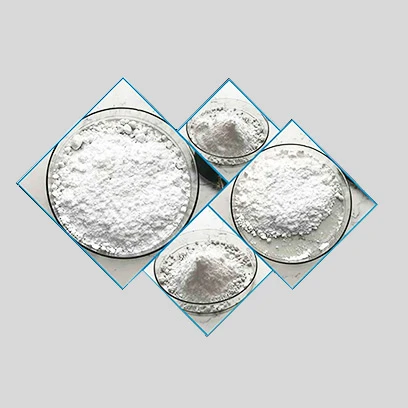
ديسمبر . 07, 2024 16:30 Back to list
Rutile Titanium Oxide Production Facilities and Their Role in Modern Manufacturing
The Rise of Titanium Oxide Rutile Factories Trends and Innovations
Titanium dioxide (TiO2) in its rutile form has become an essential compound across various industries, primarily due to its exceptional properties that provide outstanding whiteness and coverage, UV resistance, and corrosion protection. As demand continues to soar for this versatile material, the establishment of titanium oxide rutile factories has played a pivotal role in meeting global needs. This article delves into the significance, operations, and future outlook of these factories.
The Importance of Titanium Dioxide Rutile
Titanium dioxide exists in two primary crystalline forms rutile and anatase. While both forms have their applications, rutile is preferred in many sectors due to its superior durability and stability under heat and UV exposure. This makes it the favored choice in the production of paints, coatings, plastics, and even food products. The pigment's ability to scatter light effectively gives products a brighter appearance and enhances the overall aesthetic.
With a growing inclination towards sustainability and eco-friendliness, titanium dioxide rutile has also found its way into various applications in the solar energy sector, as it can be utilized in the production of photovoltaic cells. Additionally, the rising demand for titanium dioxide in cosmetics, given its photoprotective properties, has surged as more consumers seek sun protection in their skincare routines.
The Manufacturing Process
The production of titanium dioxide rutile is a complex process that typically involves the extraction of titanium from mineral ores such as ilmenite and rutile sands. The manufacturing process generally follows two main methodologies the sulfate process and the chloride process.
1. Sulfate Process Involves the dissolution of titanium ore in sulfuric acid. This method produces a lower-grade product but is considered beneficial when dealing with lower-grade ores. After initial processing, the resulting titanium sulfate is further processed to produce TiO2.
2. Chloride Process A more advanced method where titanium ore is reacted with chlorine gas, resulting in titanium tetrachloride. This process, though more expensive, yields higher purity TiO2, making it favorable for applications that require superior performance and quality.
Once the titanium dioxide is produced through either method, factories often continue to refine the product to meet specific industry standards. This may involve varying the particle size, surface treatment, and formulation adjustments to cater to specific customer requirements.
titanium oxide rutile factories

Innovations and Technology in Production
Titanium oxide rutile factories have witnessed numerous innovations in recent years aimed at enhancing efficiency, reducing environmental impact, and improving product quality. Automation and advanced manufacturing technologies, including artificial intelligence and machine learning, have streamlined operations and reduced human error.
Moreover, there has been a significant push towards achieving sustainability in the production process. Factories are increasingly adopting closed-loop systems that recycle waste material and minimize emissions. The transition from traditional methods to greener alternatives not only meets global environmental standards but also appeals to eco-conscious consumers.
Research and development play a crucial role in advancing the capabilities of titanium dioxide rutile factories. Continuous improvement in catalyst performance, alternative raw material sourcing, and energy-efficient processes are just a few areas seeing investment. This ensures that factories remain competitive in a rapidly evolving market.
The Future Outlook
The future of titanium oxide rutile factories appears promising, driven by continued expansion in various sectors including construction, automotive, and electronics. With the global push towards building sustainable economies, the demand for high-quality TiO2 is unlikely to diminish.
As the market evolves, it is expected that factories will increasingly focus on developing specialized products tailored to niche markets. This adaptability will enable manufacturers to cater to specific needs, such as the growing demand for eco-friendly and bio-based products.
Furthermore, with advancements in technology and manufacturing techniques, the cost of production is likely to decrease over time, enhancing profitability for manufacturers while making titanium dioxide more accessible across various industries.
Conclusion
Titanium oxide rutile factories stand as crucial components in the supply chain of a material that underpins numerous products and technologies. As the world increasingly values sustainability and quality, these factories will need to innovate continually to meet changing demands while minimizing their environmental footprint. The road ahead is undoubtedly exciting, filled with opportunities for growth and innovation in this essential industry.
-
High Purity Barium Sulfate Particle Size - Wholesale Manufacturer from China
NewsJul.07,2025
-
Premium Titanium Dioxide Lomon R-996 Supplier – Quality & Wholesale Price from China
NewsJul.07,2025
-
Top Titanium Manufacturers in China - Quality Titanium Dioxide Supplier & Production Line Solutions
NewsJul.06,2025
-
OEM Titanium White Supplier & Factory – High Purity, Consistent Quality for Industrial Use
NewsJul.06,2025
-
Lithopone (B301 B311) Quotes - Reliable Supplier & Factory Price High Quality Lithopone Powder for Sale
NewsJul.06,2025
-
High-Quality Determination of Sulphate as TiO2 Wholesale Supplier & Manufacturer from China
NewsJul.05,2025
